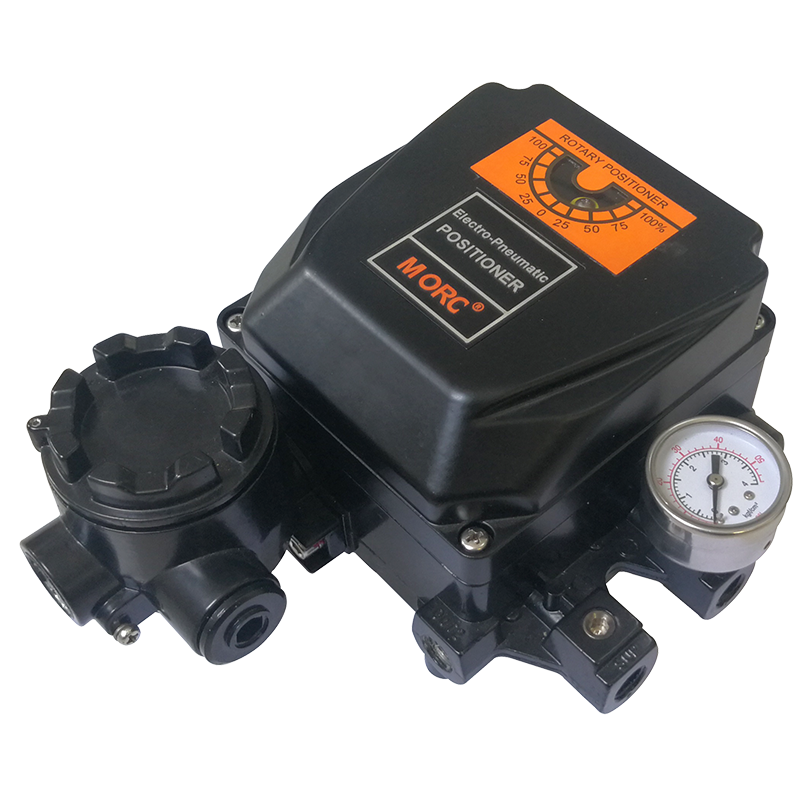For full functionality of this site it is necessary to enable JavaScript. Here are the instructions how to enable JavaScript in your web browser.
Save to read list Published by Jessica Casey, Editor LNG Industry, Friday, 22 December 2023 17:00 Pneumatic Positioner Control Valve

Dr Nicolas Spiegl and Jules Oudmans, UReason, the Netherlands, discuss when to inspect, maintain, or replace control valves to ensure a safe and efficient operation.
When the vast majority of refining and chemical processing plants and pipeline infrastructure were built in the last century, nearly all controls were analogue. Analogue signals, sometimes even pneumatic signals, were used to transmit signals from flow, level, temperature, or pressure sensors to the control system and from the control system to the final control element – usually a control valve. Since then, a mixture of analogue technology and modern digital solutions have been used for extensions and modifications.
As a result, the typical control valve asset base at any installation today will be a mix of vendors and technology, spanning several decades of technological development. This is a massive challenge for any asset management strategy. This article will review the four primary methods used today to manage the fleet of control valves and discuss the advantages and disadvantages of each of the methods.
When managing a fleet of control valves, the fundamental question is when to inspect, maintain, or replace the control valves to ensure a safe and efficient operation. To answer this question, one needs to know the current condition of the valves and the changes in condition over time.
Manual inspection requires a trained maintenance technician to visit each control valve in some rotation frequently. A thorough inspection is done by taking the section with the valve out of operation, connecting external test equipment to the valve, and running comprehensive tests.
This inspection method provides a spot analysis of the current control valve condition. This includes the functioning and performance of the valve and the pneumatic or electric actuator. The data from each inspection can be collected and uploaded to a database, which allows analysing the changes in condition and performance over time.
Doing valve condition analysis this way is very costly. The analysis, which can take 2– 4 hours, requires a process stoppage and a permit to work and uses at least two staff members to ensure safety. The entire plant or unit may be shut down if the valve is on a main process line. As long as the asset owner or the third-party service company had the staff, this was a great way to collect valuable data with lots of parameters, conduct detailed tests and close visual inspection to determine if there were leaks, corrosion, or other damage.
Manual inspection and testing requires enough staff to assign and an expert technical team to execute it properly. As soon as plants started to lose people to layoffs and retirements, the frequency with which the control valves were inspected and tested de-creased remarkably. It also introduces an increased risk, including accidents and injury, and the diagnostics only show what is happening right now. The expert does not know what happened to the valve last month or year. This method of valve condition analysis can only be scaled with additional staff.
Smart positioners are a game changer for control valve diagnostics. These new intelligent devices are equipped with limited data processing and storage capabilities. Operating data, like the number of cycles, the functioning of the actuator, and the difference between the desired and actual position value, are directly available at the device. This diagnostic information is available during the operation of the valve. Stopping production in the section with the valve is not required.
Using smart positioners and their diagnostic information for the asset management strategy brings two main challenges. Firstly, only a fraction of a typical plant’s control valves is equipped with intelligent positioners. Many valves in brownfield installation will still be analogue valves. Upgrading the entire fleet of control valves requires a significant investment, meaning the information from the intelligent positioners cannot be used for a holistic asset management strategy covering all the valves. Secondly, how is the data accessed from the smart positioner? One option is to go to the actuator and manually download the information; however, this is labour intensive and again requires a visit and permits. The other option is to use either HART or field bus communication to transmit the data to a centralised asset management system. Even for available smart positioners in a plant, this infrastructure to communicate the diagnostic data is only sometimes available. Intelligent positioners provide valuable information and insights for an asset management strategy but this method is only scalable across some valves and requires a considerable investment.
Enjoyed what you've read so far? Read the full article and the rest of the December issue of LNG Industry by registering today for free!
Read the article online at: https://www.lngindustry.com/special-reports/22122023/keeping-control-of-valves/
GTT has received two orders for the tank design of two new LNG carriers.
Embed article link: (copy the HTML code below):
This article has been tagged under the following:
This content is available to registered readers of our magazine only. Please sign in or register for free.
Register for free » Get started now for absolutely FREE, no credit card required.
Already a member? Sign in here

Fisher Control Valve Positioner Copyright © 2024 Palladian Publications Ltd. All rights reserved | Tel: +44 (0)1252 718 999 | Email: enquiries@lngindustry.com